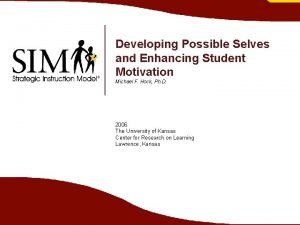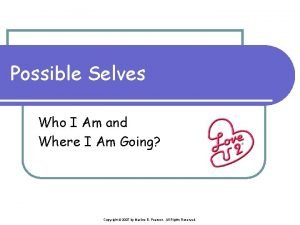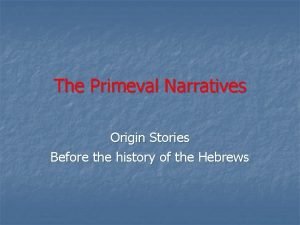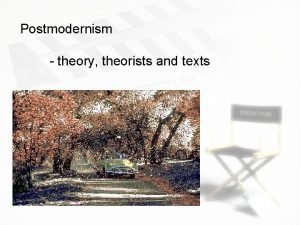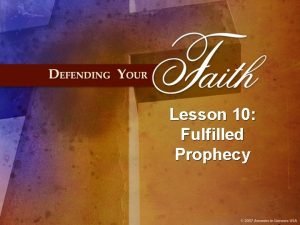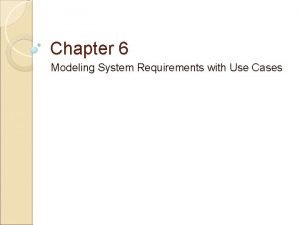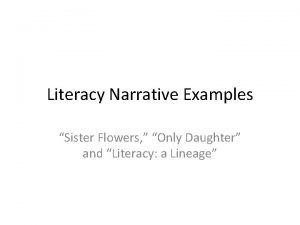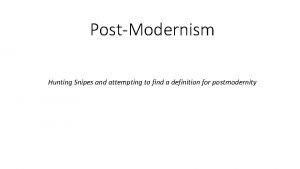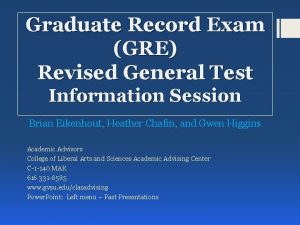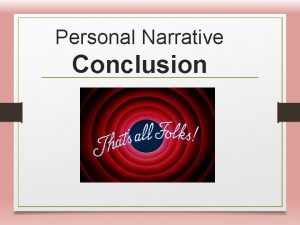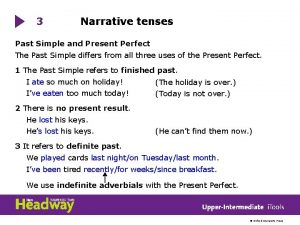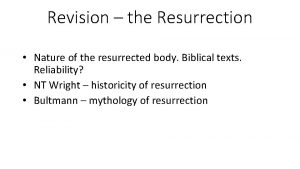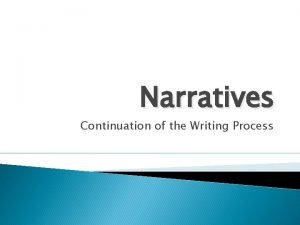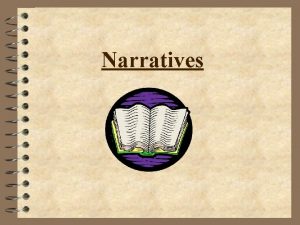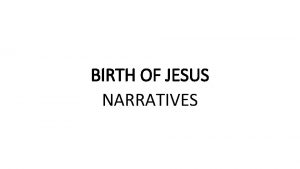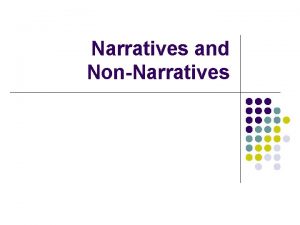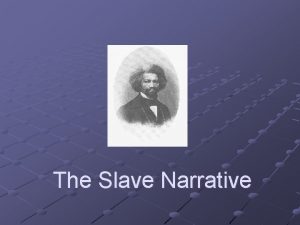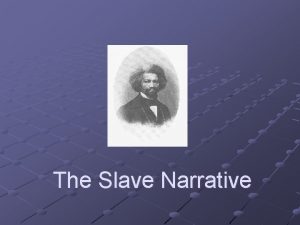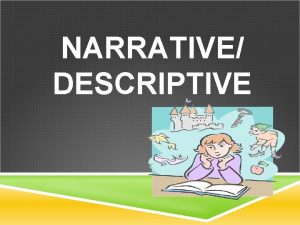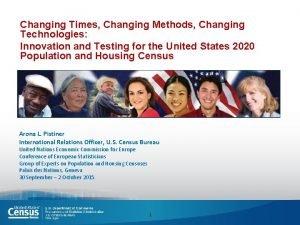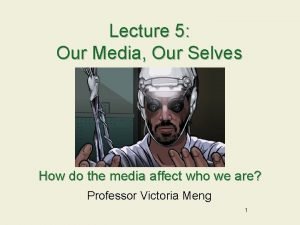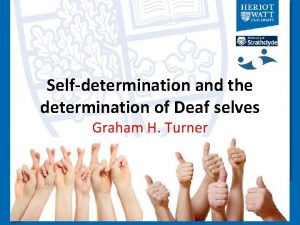Narratives of Changing Selves SPSPChanging Selves Narratives of


















- Slides: 18

Narratives of Changing Selves #SPSPChanging. Selves

Narratives of personal change at a transformative festival Annayah Prosser University of Oxford, University of Bath @annayahprosser


What are Transformative Experiences? Personal Transformation: “…changes what it is like for you, to be you. It can change your point of view, and by extension, your personal preferences, and can even change the type of person that you are, or take yourself to be. ” Epistemic Transformation: “…you cannot know what it is like to have that kind of experience, until you’ve had it. ” Paul, L. (2014) Transformative Experience. Oxford University Press. Oxford, UK.

Research Questions Who is transformed? How are they transformed? QUANTITATIVE QUALITATIVE

Burning Man

Mixed Method Approach Quantitative Measures • Ratings of transformation presence and extent • Demographics: Age, Gender, Income, Education, Politics, Religiosity, times attended • Linear regressions to assess predictive capability of TE type and demographics on extent and presence of TE. Qualitative Measures • Responses to the question, “Did Burning Man change you, your life or your outlook? If so, please explain how. ” • Analysed with inductive thematic analysis (Braun and Clarke, 2006) • Themes and dimensions coded for presence (1) or absence (0) • Categories verified through an inter-rater reliability analysis (Cohen’s Kappa>. 96 for all categories)

Sample Summary 1113 participants collected online following the 2016 festival. Gender Female Male Other/Neither/Both Age

Who is transformed? Presence: Did you have a transformative Experience at Burning Man? Extent: What was the extent of this transformation? 0, 2 *** Beta Value 0, 1 0 -0, 1 Presence *** -0, 2 Extent -0, 3 * -0, 4 Gender Age # Times Attended * p. 05, ** p. 005, *** p<. 001 Politics Education Income Religious

Who is transformed? Presence: Did you have a transformative Experience at Burning Man? Extent: What was the extent of this transformation? 0, 2 *** *** Beta Value 0, 1 0 -0, 1 Presence *** -0, 2 Extent ** -0, 3 * -0, 4 Gender Age # Times Attended * p. 05, ** p. 005, *** p<. 001 Politics Education Income Religious

How are they transformed? Other Self Social Attitudes Self-knowledge Social Interactions Authenticity Social Connection Emerging Traits Faith in Humanity Perspective Themes coded for presence (1) or absence (0)

Frequency of transformation types 300 Frequency 250 200 150 100 50 0 Social Faith in Attitudes Interactions Connections Humanity Self Authenticity Emerging Perspective Knowledge Traits Transformation Category

How are different kinds of people transformed? Age Gender Self Knowledge (B= -. 018, p=. 018) Emerging Traits (B=. 014, p =. 05) Authenticity (B=. 537, p=. 003) Politics Emerging Traits (B=-. 213, p=. 01) Times Attended Income Social Attitudes (B=. 078, p=. 035) Emerging Traits (B=. 089, p=. 017) Education Authenticity (B= -. 154, p=. 004) Self Knowledge (B=. 333, p=. 000) Emerging Traits (B=. 161, p=. 002) Logistic Regression: TE Type DV, Demographics, IV

Strength of transformation types Presence: Did you have a transformative Experience at Burning Man? Extent: What was the extent of this transformation? *** 1 Regression Beta Value 0, 8 *** * 0, 6 0, 4 0, 2 Presence 0 Extent -0, 2 Transformation Type ive its rs pe Pe in er g Em ct ra g. T tic en Au th ow Kn lf Se in Fa ith *p. 05, ** p. 005, *** p<. 001 ity e dg le an i m Hu ne on So cia l. C te l In So cia ty n ct tio ra c tu tti l. A cia So io ns de s -0, 4

Strength of transformation types Presence: Did you have a transformative Experience at Burning Man? Extent: What was the extent of this transformation? *** 1 *** Regression Beta Value 0, 8 *** * 0, 6 *** 0, 4 0, 2 Presence 0 Extent -0, 2 Transformation Type ive its rs pe Pe in er g Em ct ra g. T tic en Au th ow Kn lf Se in Fa ith *p. 05, ** p. 005, *** p<. 001 ity e dg le an i m Hu ne on So cia l. C te l In So cia ty n ct tio ra c tu tti l. A cia So io ns de s -0, 4

Discussion

Acknowledgements Prof. Molly Crockett Dr. Tim Kurz Dr. S. Megan Heller Dr. Daniel Yudkin Daniel Do BRC Census Lab Playa Research Team University of Oxford University of Bath

Stage 1: Thematic Analysis Braun and Clarke (2006) : “A method for identifying, analyzing and reporting patterns within data. ” Initial Coding for content Assessment of similarity of codes Refining of themes Final categories and dimensions Stage 1. 5: Inter-rater reliability First coding (Familiarity) Second coding (Accuracy) Discussion of differences & clarification of categories Third coding Final ‘locked’ dataset
 Real self vs ideal self example
Real self vs ideal self example Possible selves tree
Possible selves tree Selves
Selves Possible selves examples
Possible selves examples Primeval narratives
Primeval narratives Postmodernism definition
Postmodernism definition Messianic prophecies fulfilled in the infancy narratives
Messianic prophecies fulfilled in the infancy narratives Oral narratives
Oral narratives Use case narratives
Use case narratives Examples of dominant impressions
Examples of dominant impressions Postmodernism definition
Postmodernism definition The narratives that vanquished peoples
The narratives that vanquished peoples Conclusion for personal narrative
Conclusion for personal narrative Ckla grade 5 unit 1 personal narratives
Ckla grade 5 unit 1 personal narratives What is oral literature?
What is oral literature? What is the purpose of narration
What is the purpose of narration Simple past narrative
Simple past narrative Sondierungsfragen
Sondierungsfragen What is the nature of the resurrection narratives
What is the nature of the resurrection narratives

